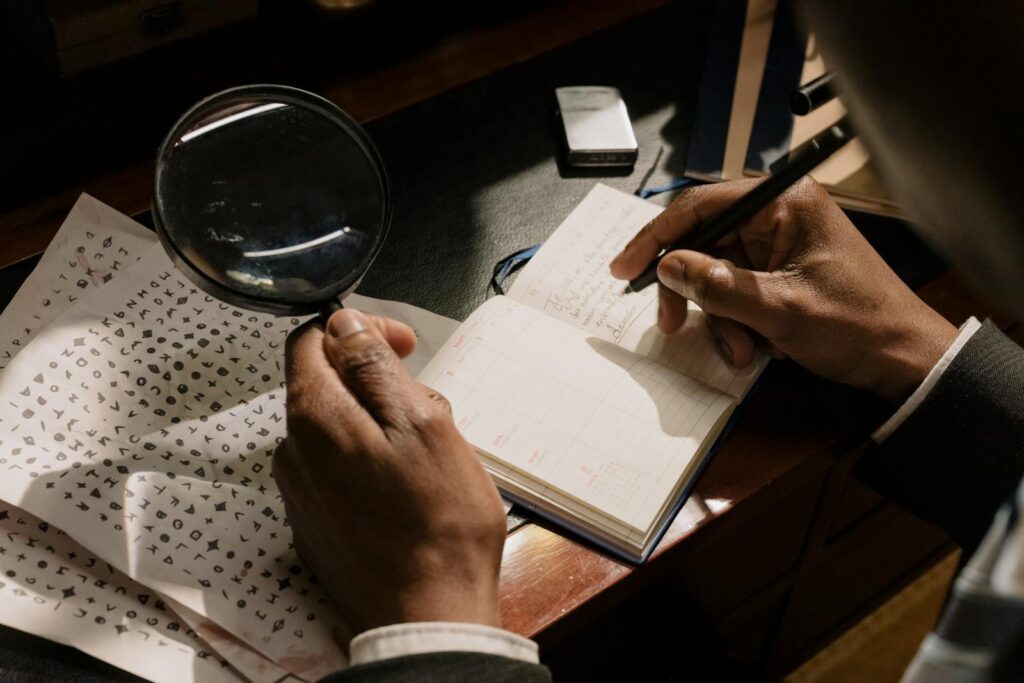Now Reading: Tools for successful DNA typing on exhumed bodies
-
01
Tools for successful DNA typing on exhumed bodies
Tools for successful DNA typing on exhumed bodies
What is exhumation?
Exhumation is the process in which the remains of the deceased being excavated from the site of burial; this can be done for both cremated remains and buried bodies. In simple words, exhumed body is a buried dead body that excavated after years or some period either for legal purpose or for shifting the grave. Generally, exhumation is confused with the retrieval of clandestinely buried bodies. In any case, where a person killed and illegally or secretly buried in order to destroy all the evidences related to the murder, retrieval of such bodies is not determined as exhumation. Only when proper inhumation practiced legally with all rituals only then exhumation can be applicable.
Does exhumation require legal permission?
To carry out exhumation one needs to apply to a professional with the exhumation license for performing such procedures where the reason for exhumation of the deceased is detailed. In India, dead body are exhumed only with the written order from the First Class Magistrate under the section 176 of the Criminal Procedure Code and the police under the section 174 of the Criminal Procedure Code can do retrieval of illegally buried body. Coroner’s system does not exist in India but in the countries where it is applicable, coroners are the one who usually permit exhumation.
Reasons for performing exhumation
Exhumations are very rare and can be traumatic for the family or beloved ones involved. It suggests consulting all the family members before proceeding. There are various reasons to perform exhumation such as police investigation, DNA testing, family choice or in order to transport the deceased to their home country; it takes a long time in order to peruse permission and is a matter of attached emotions. Exhumation is essential in certain cases where later some fresh facts come into light showing some foul play due to which postmortem or some other findings becomes necessary to establish the cause of death or in order to solve the case. Here samples in questioned are collected from the deceased and this is when forensics come into play. In such cases, DNA profiling or typing plays a vital role for individualization and identification in case of unknown bodies and mass disasters. Sometimes in degraded bodies, bones are the only accessible source of DNA and sometimes teeth also.
Methods for extraction of DNA
New methods of extraction are still in search and improved. Short tandem repeat (STR) analysis mostly performed for personal identification. Nuclear DNA from bones at different stages of degradation are isolated using three methods:
Organic phenol chloroform method of extraction.
DNA extraction from crystal aggregates method that removes the inhibitors much better and is a good method of choice when identity determination of exhumed bodies is required.
Extraction by total demineralization method, which is termed as the best method in most cases of DNA extraction from bones although it does not provide pure DNA and these extracted DNA’s are later compared using PCR amplification method.
The possibility of DNA extraction from bones and teeth exposed over time to a variety of environmental effects become a valuable tool for the identification of missing persons and unknown remains. There are different steps for the identification of human skeletal remains which consist of preparation, pulverization, DNA extraction, Quality control, PCR, DNA profiling and data bank. For human identification, it is very important to have DNA makers, which exhibits the highest possible variation or a number of less polymorphic markers, which can combine in order to obtain the ability to distinguish between the obtained samples. Due to which forensic specimens are often challenging to PCR amplify, as the DNA in the specimen may be severely degraded.
DNA typing tools
Restriction fragment length polymorphism (RFLP):
Normal variations can often occur in DNA sequence of the coding and non-coding regions, as sequence polymorphism and length polymorphism are the two main forms of DNA variation. Decalcification tends to improve he success of DNA typing and because of the high degree of polymorphism exhibited by STR loci and the sensitivity of PCR amplification of STR alleles and all these newer clinical testing procedures highly benefit significantly from STR typing. Often used DNA typing methods are RFPL and PCR techniques. Restriction fragment length polymorphism (RFLP). RFLP analysis was the first technique, used in forensic for DNA typing. This technique shows variations in the sequences of homologous DNA, as to distinguish individuals and populations or species or to pinpoint the locations of genes within a sequence.
Polymerase chain reaction (PCR):
Polymerase chain reaction (PCR). PCR based STR analysis is now a more modern approach to DNA typing. This method of DNA profiling used today relies on PCR that uses short tandem repeats (STR) after DNA extracted and amplified by PCR and then genotyping performed, giving the results accurately. The sequence polymorphism results from differences in the sequence of bases at a particular locus. Basically locus is a specific location on a DNA molecule and length polymorphism results from differences in the length of DNA at a particular locus where differences in the length of the DNA are due to variations in the number of times a certain sequence of bases are repeated. The number of times that a certain sequence repeats at a specific locus may often vary between individuals, due to which locus that has a repeated unit of nine to ninety-eight bases is called variable number tandem repeat locus (VNTR). Hence, loci that have a repeating unit of only two to seven bases are termed as short tandem repeats (STRs) or microsatellites.
Nuclear DNA typing can also done by using an AmpflSTR Profiler kit and mitochondrial DNA typing of hypervariable regions such as HV1 and HV2 in a controlled region are both performed with decalcified and non-treated bone powder samples that are extracted and an alternative to these markers is the use of single nucleotide polymorphisms (SNPs). Tools used specially for SNP typing which is a multiplex PCR based amplification followed by simultaneous detection by primer extension (PEX) is further analysed by Matrix Assisted Laser Desorption Ionization Time-of-Flight Mass Spectrometry (MALDI-TOF MS). These tools and techniques have a particular advantage in the analysis of degraded or poor samples.
Future scope
DNA typing often involves specimens that contains degraded material, less in quantity, contaminated, or from multiple unknown sources. It sometimes cannot repeat, due to the less quantity and limitation of the sample size. Despite the challenges, we believed that it is possible to develop reliable forensic DNA typing systems in future, as it is advancing rapidly. RFLP-based typing methods continue to be refined and improve in the coming time, PCR typing methods and tools generally used in some court cases, and other tools and techniques are developing in scientific and commercial research laboratories. DNA typing tools and methods will continue to replace with ever more sophisticated approaches in the coming time.
References
- Alonso, A. (2001, June). DNA typing from skeletal remains: evaluation of multiplex and megaplex STR systems on DNA isolated from bone and teeth samples. PubMed. https://pubmed.ncbi.nlm.nih.gov/11387635/
- Alonso, et.al., A. (2001). DNA Typing from Skeletal Remains: Evaluation of Multiplex and Megaplex STR Systems on DNA Isolated from Bone and Teeth Samples. Croatian Medical Journal. https://www.promega.com/-/media/files/resources/profiles-in-dna/403/dna-typing-from-skeletal-remains-evaluation-of-multiplex-and-megaplex-str-systems.pdf?la=en
- Comparison of three methods of DNA extraction from human bones with different degrees of degradation. (2012). PubMed Central (PMC). https://www.ncbi.nlm.nih.gov/pmc/articles/PMC3254873/
- DNA Extraction Methods. (2012, January 1). ScienceDirect. https://www.sciencedirect.com/science/article/pii/B9780123745132000026
- DNA Typing | Encyclopedia.com. (2021, February 29). ENCYCLOpedia.com. https://www.encyclopedia.com/medicine/encyclopedias-almanacs-transcripts-and-maps/dna-typing-0
- Identification Through DNA Analysis in Criminal and Family-Relatedness Investigations. (2010, January 1). ScienceDirect. https://www.sciencedirect.com/science/article/pii/B9780123694287000318
- PCR Amplification: Capabilities and Cautions. (2012, January 1). ScienceDirect. https://www.sciencedirect.com/science/article/pii/B978012374513200004X
- Petkovski, E. (2005, May). SNPs and MALDI-TOF MS: tools for DNA typing in forensic paternity testing and anthropology. PubMed. https://pubmed.ncbi.nlm.nih.gov/15932083/
- Short Tandem Repeat (STR) Loci and Kits. (2012, January 1). ScienceDirect. https://www.sciencedirect.com/science/article/pii/B9780123745132000051
- Stanleys, E. (2019, January 30). Exhumation Guide. Rowland Brothers Exhumation Services. https://rbexhumations.com/exhumation-guide/
- Tahir, M. A. (2000, July 1). DNA Typing of Samples for Polymarker, DQA1, and Nine STR Loci from a Human Body Exhumed After 27 Years. ASTM International. https://www.astm.org/DIGITAL_LIBRARY/JOURNALS/FORENSIC/PAGES/JFS14795J.htm








